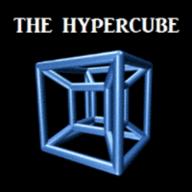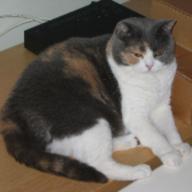3 integration Qs
2012-02-24 1:34 am
1) Find the area of the segment cut off from the hyperbola x²/9-y²/4=1 by the chord x=4. 2) Find the whole area included between the curve of y²=x³ and the line x=4. 3) Find the area of the segment cut off from the curve xy=2 by the straight line x+y=3. *** Steps are required.
回答 (1)
2012-02-24 5:13 am
✔ 最佳答案
1) Rewriting the equation of the curve with y as the subject:y = (2/3)√(x2 - 9) or - (2/3)√(x2 - 9)
So the area can be expressed as:
A = 2 ∫ (x = 3 → 4) (2/3)√(x2 - 9) dx
= (4/3) ∫ (x = 3 → 4) √(x2 - 9) dx
Sub x = 3 sec θ, dx = 3 sec θ tan θ dθ
When x = 3, θ = 0, when x = 4, θ = cos-1 (3/4)
A = (4/3) ∫ [θ = 0 → cos-1 (3/4)] (3 tan θ) 3 sec θ tan θ dθ
= 12 ∫ [θ = 0 → cos-1 (3/4)] sec θ tan2 θ dθ
= 12 ∫ [θ = 0 → cos-1 (3/4)] (sec3 θ - sec θ) dθ
= 12 ∫ [θ = 0 → cos-1 (3/4)] sec3 θ dθ - 12 ∫ [θ = 0 → cos-1 (3/4)] sec θ dθ
Now,
∫ [θ = 0 → cos-1 (3/4)] sec3 θ dθ = ∫ [θ = 0 → cos-1 (3/4)] sec θ d(tan θ)
= [sec θ tan θ] [θ = 0 → cos-1 (3/4)] - ∫ [θ = 0 → cos-1 (3/4)] tan θ d(sec θ)
= (4√7)/9 - ∫ [θ = 0 → cos-1 (3/4)] tan2 θ sec θ dθ
= (4√7)/9 - ∫ [θ = 0 → cos-1 (3/4)] (sec3 θ - sec θ) dθ
2 ∫ [θ = 0 → cos-1 (3/4)] sec3 θ dθ = (4√7)/9 + ∫ [θ = 0 → cos-1 (3/4)] sec θ dθ
Thus
A = 6 x (4√7)/9 + 6 ∫ [θ = 0 → cos-1 (3/4)] sec θ dθ - 12 ∫ [θ = 0 → cos-1 (3/4)] sec θ dθ
= (8√7)/3 - 6 ∫ [θ = 0 → cos-1 (3/4)] sec θ dθ
= (8√7)/3 - 6 [ln |sec θ + tan θ|] [θ = 0 → cos-1 (3/4)]
= (8√7)/3 - 6 ln [(4 + √7)/3]
2) Rewriting the equation of the curve with y as the subject:
y = x3/2 or -x3/2
So the area is:
A = 2 ∫ (x = 0 → 4) x3/2 dx
= [4x5/2/5] (x = 0 → 4)
= 128/5
3) First of all, finding the points of intersection:
x + 2/x = 3
x2 + 2 = 3x
x2 - 3x + 2 = 0
x = 1 or 2
So the area is:
A = ∫ (x = 1 → 2) (3 - x - 2/x) dx
= [3x - x2/2 - 2 ln |x|] (x = 1 → 2)
= 3/2 - 2 ln 2
參考: 原創答案
收錄日期: 2021-04-13 18:32:56
原文連結 [永久失效]:
https://hk.answers.yahoo.com/question/index?qid=20120223000051KK00542

